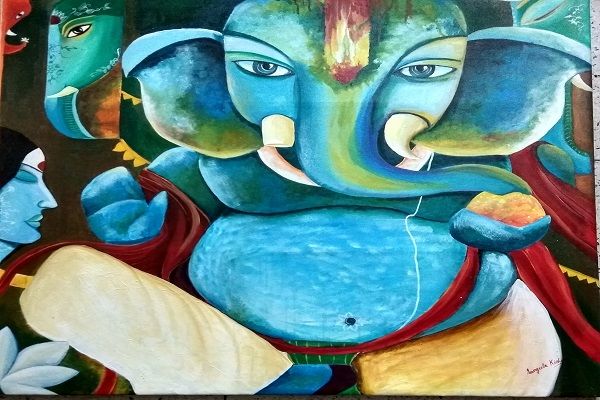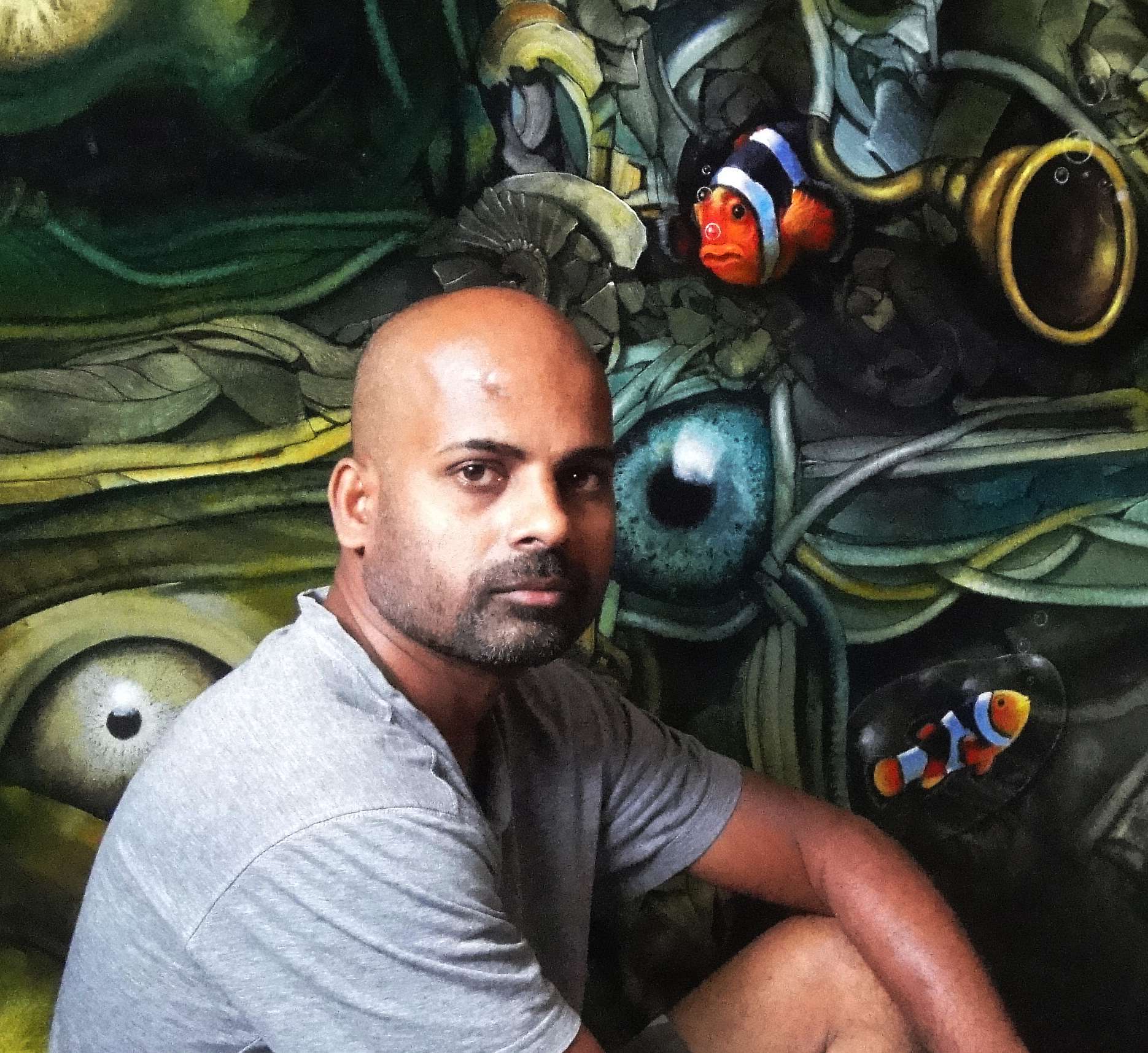
Some relationships are stronger than the bonds of blood and they are forged by trust and the ability to withstand any adverse circumstances. One of those relationships is that of a student with his teacher. A teacher or a Guru shapes the character of his student and make him realize his true potential as against the lashings of the destructive criticism of the world. Vighnaharta Lord Ganesha is like that Guru. ‘Gu’ means ‘Andhkaar’ or Darkness and Ru means Destroyer. So, a teacher enlightens with the light of wisdom and intellect. But, that is not easily done.
Gold is subjected to high temperatures to mold it into a beautiful ornament. Similarly, a teacher subjects his students to harsh contingencies to make them ready for the real world. In hard times, it is a teacher’s calm countenance and his deep resolve reflecting from his personality that gives his pupil strength to overcome whatever hurdle comes his way. Ganesha paintings offer that panacea to the eyes and to the soul.
Lord Ganesha is the God of knowledge and intellect where Ga represents Buddhi or intelligence and Na signifies Vivek or wisdom. There are many eulogies written in the quick-witted god who resolved a deadlock with his ingenious solutions. A teacher was also a student once. Lord Ganesha’s determination was put to times every now and then.
-
Ganesha- The symbol of the continuum
The lord is sometimes seen acting as a scribe for the great Rishi Ved Vyas in Ganesha painting. Vyas requested the Lord to write a poem for him if he dictated. Ganesha agreed to write on the condition that Vyas will have to recite that poem without any break. The sage upgraded the challenge that Ganesha would have to understand whatever he is dictating before writing.
Ganesha started to write the great epic Mahabharata while the sage was reciting. Ganesha was rushing to complete his task as every now and then Vyas would recite an eclectic verse which was hard for Ganesha to comprehend and the peacock-feather quill Ganesha was using to write broke. Ganesha proved to be a pupil who would overcome every hostility and keep his word to Vyas. He broke off his tusk and started using it as a quill so that the dictation gets completed without any hurdle.
Also Read: The Significance of Ganesha Paintings & Idols as Gifts in Indian Culture
-
Ganesha- The quick-witted
Once it happened that Ravana outwitted Lord Shiva and managed him do his bidding. He told the three-eyed lord to leave Mount Kailasha and live with him in Lanka that Lord Shiva made for Goddess Parvati and eventually Ravana managed to get that from him as a boon. The Goddess expressed her displeasure over this. But, nothing could have been done because Lord Shiva had given him the word. He agreed to go with Ravana on a condition that he would carry Shiva in the form of a Linga and he could not place the linga on the ground in the middle of the journey but on reaching Lanka. If he would do this, Lord Shiva would be able to come to reside with Ravana.
Ravana agreed to carry Shivalinga all the way up to Lanka. All of the Devas saw this as an evil design and took their entreaties to Lord Ganesha to undo what has been done. They could not fight the mighty Ravana themselves so went to take refuge of Ganesha’s wit.
Ganesha knew that fighting Ravana over this would be unethical so he planned to trick him. All he had to do was make Ravana place that Shivlinga on the ground in the middle of the journey. He offered Ravana to drink some water. Owing to the mischief of Ganesha, he had to go to answer nature’s call. He asked Ganesha to help him to hold the Shivlinga for him and mentioned sternly to not to place it on the ground. This act is well illustrated in several Ganesha paintings.
Also Read: Know the Trivia of Ganpati Art you buy for your home
Ganesha, disguised as a cowherd, was looking forward to this chance. He placed Shivlinga on the ground at once and vanished. Ravana could not lift it up because of Lord Shiva’s condition. It is believed that Murudeshawara is the shrine where Ganesha tricked Ravana.
-
Ganesha as the endower of perspective
Perspective is a necessary evil. A story proves that Lord Ganesha proved how important it is to avoid the everyday conflict by respecting the point of view of others. Narad Muni approached Lord Shiva with mango to declare that which one of his two sons more is worthy to have the fruit as that is for the better son of the Lord. Shiva told Narad that it is impossible for a parent to choose among his children. Narad came up with a query that whoever amongst Kartikey and Ganesha would go around the world thrice and come back first would be the better son.
Also Read: The Classic Cult of Yogic Lord Shiva Paintings
Kartikey at once flew to race his brother upon his peacock but Ganesha seemed not to worry at all. When Kartikey was about to complete his round he was bewildered to find that Ganesha was not putting any efforts into winning the race. He knew that his brother was not going to give up and something else was cooking in his tricky head. Just when he was arriving after completing the rounds of the whole world, Ganesha hurriedly got up and took three rounds of his parents.
Narada was bemused by his sheer presence of mind. Ganesha explained that his parents meant the world for him and Kartikeya went to take rounds of the existence he felt responsible for. So, it indeed was a matter of perspective. Kartikey accepted his defeat and took that mango from Narad’s hands and presented it to Ganesha. Showing his humility and love, Ganesha shared it with his whole family.
You may bring Lord Ganesha’s paintings online for home or sell art online and see them whenever you are stuck in a whirlwind of self-pity to know that even when it seems that you are left with no choice, there is always a way!





















